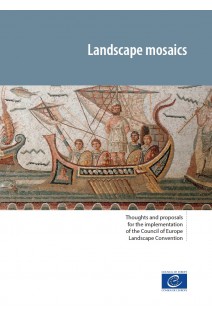Preface Chapter 1 – Towards a grammar of European landscapes
Introduction
1. Methodological references
2. Methodological guidelines
Conclusions
Chapter 2 – Designing agricultural landscapes for a sustainable development
Introduction
1. Landscape and agriculture: a long story
2. The contribution of landscape to agriculture
3. Landscape diagnosis and the agroecological project
Conclusions
Chapter 3 – The rural landscape in transition: energy, agriculture and demography
Introduction
1. Rural landscapes in energy transition
2. Rural landscapes in agricultural transition
3. Rural landscapes in demographic transition
4. Rural landscapes in digital transition
Conclusions
Chapter 4 – Experiences of rural landscape
1. Experience of Tuscany, Italy
2. The Manifesto for the beauty of rural landscape in Campania, Italy
Chapter 5 – Urbanisation, town planning and landscape
Introduction
1. Urbanisation, urbanism and landscape: elements of a complex equation
2. The negative effects of urbanisation and contemporary urbanism on landscape
3. Landscape as the foundation, means and purpose of a new type of urbanism
4. Principles for a new, landscape-based urbanism
Conclusions
Chapter 6 – A review of integrated approaches to landscape monitoring
Introduction
1. Theoretical background
2. Principles of landscape monitoring
3. Landscape monitoring bodies and initiatives
4. Proposing a typology of landscape monitoring
5. Future challenges for landscape monitoring
Conclusions
Chapter 7 – Experiences with public funds and the landscape
Introduction
1. Austria
2. France
3. Ireland
4. Latvia
5. Poland
6. Switzerland
7. United Kingdom
8. Canada
9. United States
Chapter 8 – Landscape and responsibility
Introduction
1. The concept of responsibility
2. Responsibility and landscape
3. Towards shared responsibility
4. Responsibility, landscape and well-being
Conclusions
Chapter 9 – Professional recognition of landscape architects
Introduction
1. Professional bodies and global recognition
2. Professional training and practice
3. Professional recognition
4. Investment in landscape
Conclusions
Appendices
Chapter 10 – Dry stone in the landscape, inheritance and innovation for rural sustainability
Introduction
1. Dry stone: timeless and universal
2. The use of dry stone, a contribution to sustainable development
3. A range of uses for this building method
Conclusions
Chapter 11 – Walking the landscape
Introduction
1. A short history of walking
2. From walking to hiking: the effects of industrialisation
3. The development of hiking organisations
4. Walking the landscape: an impression
5. Walking the industrial landscape
6. Walking the urban landscape
7. Organised walking of the landscape
Conclusions
Chapter 12 – Traditional forms of thought and spirituality
Introduction
1. The Waldviertel region in Austria
2. Songlines in Australia
3. Ise in Japan
4. Traditional Chinese concepts
Conclusions
Chapter 13 – Urban landscapes and climate change: the contribution of Landscape Architects to improve the quality of life
1. Quality of life in towns and cities – science-based studies
2. Landscape solutions
3. Learning from landscape
4. Opportunities and issues
Conclusions
Chapter 14 – Landscape and responsibility of stakeholders for sustainable and harmonious development




